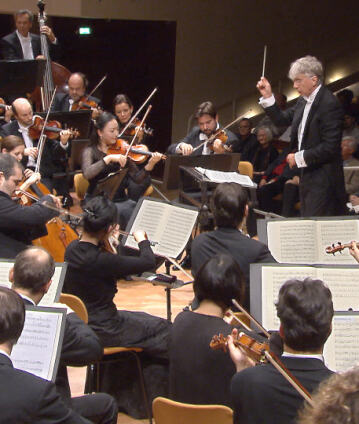Giovanni Antonini and Piotr Anderszewski in works by Mozart and Haydn

This concert takes us to the heyday of the First Viennese School: with two late Haydn symphonies – Nos. 101 and 103 – and Mozart’s dark and dramatic Piano Concerto in C minor. The conductor, Giovanni Antonini, is a preeminent early music interpreter. The Mozart concerto is a reunion with Piotr Anderszewski, whose playing captivates with “myriad colourings” and “poetic sensibility” (The New York Times).
The “London Symphonies” mark a high point in Joseph Haydn’s oeuvre. For decades as “Royal Esterházy Composer”, Haydn had experimented with this genre, still in its infancy at the time, testing forms and effects and setting standards with his works. Haydn wrote his twelve last symphonies at the peak of his fame when he was invited to London by the violinist and impresario Johann Peter Salomon. They represent the sum total of his compositional experience and won the English audience over by storm with their wit and humour. Symphonies Nos. 101 and 103 became famous as “The Clock” and “Drum Roll”.
Giovanni Antonini, who conducts the Berliner Philharmoniker, is an absolute Haydn specialist: the conductor and his ensemble Il Giardino Armonico were at this time recording all the master’s symphonies as part of the project “Haydn 2032”.
Like the symphony, the piano concerto is also a “child” of the First Viennese School. It was not Haydn, but rather Wolfgang Amadeus Mozart who pointed the way ahead in this genre. Mozart, who was also a phenomenal pianist, composed many of his concerti for himself to perform at the so-called “Subscription Academies”. An example of this is the C minor Piano Concerto, composed while he was working on the opera Le nozze di Figaro and already foreshadowing Beethoven with its dark, majestic air. Piotr Anderszewski, soloist at the concert, made a strong impression as a sensitive interpreter of Mozart at his Philharmoniker debut in 2005.
© 2015 Berlin Phil Media GmbH
Related interviews